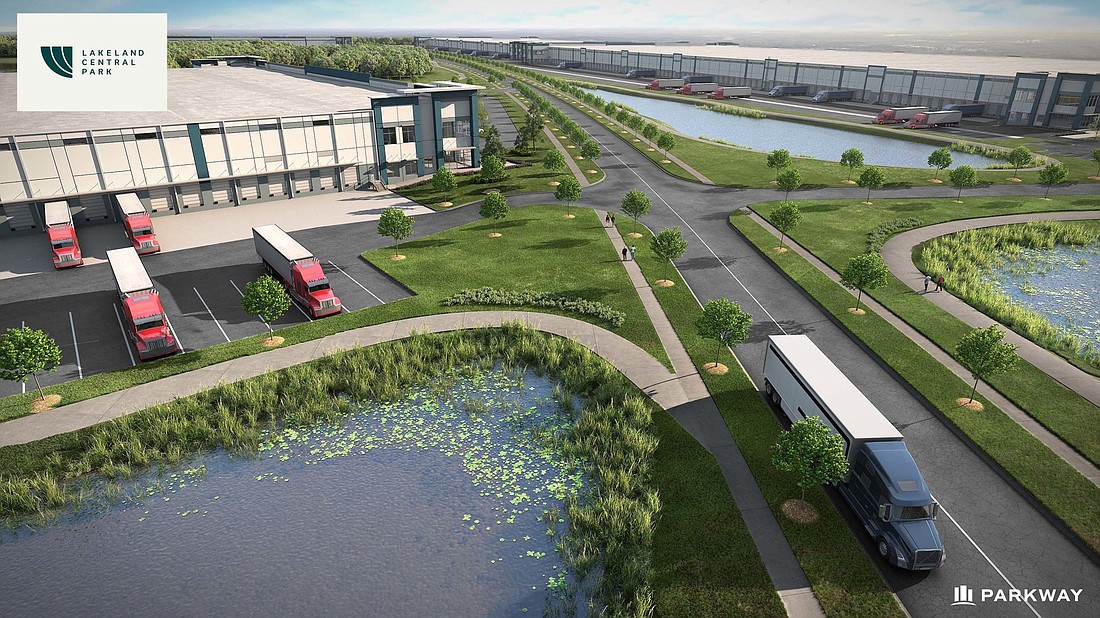- January 14, 2025
-
-
Loading

Loading

More than 40 million square feet of new industrial real estate —modern-day warehouses, distribution and fulfillment centers and so-called “last-mile delivery outposts — have been delivered along the Gulf Coast and into Central Florida since 2015, according to data collected by area commercial real estate brokerage firms.
That’s roughly equivalent to all of the office space in Hillsborough and Pinellas counties, and a testament to the strength of the region’s Central and Southwest Florida location and population clustering.
But while the breadth of the new product has been tremendous in scope, experts say the sector is poised for even greater growth going forward, the result of an ongoing, macro-economic evolution of the logistics industry.
“Requirements and consumer consumption patterns have pushed industrial developments in new directions,” says Ed Miller, an executive managing director at commercial real estate brokerage Colliers International, in Tampa, who specializes in industrial properties.
Tangibly, industrial building designs also are changing to adapt to new and more efficient distribution methods — a trend that’s resulted both in larger buildings than ever before, with a greater emphasis on truck courts and parking, and smaller “last-mile” buildings positioned closer to population centers.
Combined, the new product and increasing functional obsolescence of older buildings could sustain the current industrial real estate boom for years to come.
Most recently, Orlando-based Parkway Property Investments LLC broke ground last week on Lakeland Central Park, a 740-acre industrial hub that will contain more than five million square feet of distribution and related space when completed in Polk County around 2028.
Parkway Property officials say the new industrial project will incorporate “state-of-the-art” designs that are fast becoming a hallmark of the logistics business as it pivots increasingly to e-commerce fulfillment for consumers.
“Our view is Lakeland will continue to grow because of its Central Florida location and its ability to reach a wide swath of consumers, and likewise the cargo capacity of Lakeland’s airport will increase,” says Parkway Property CEO Jim Heistand.
“So we wanted a property that would give us a large enough scale to respond to that.”
To capture surging demand for space as quickly as possible, the company’s first development in the 4045 Old Tampa Highway project will be a 708,000-square-foot distribution center, which it is building on a speculative basis without tenants in place.
So-called “spec development” has become popular in recent years in response to an immediacy of tenant needs. Many businesses say they simply cannot wait to develop new outlets on a “build-to-suit” basis.
“E-commerce has been a game-changer, and it’s not going away,” says Parkway Property Managing Director of Development Whit Duncan. “By 2040, it’s estimated that e-commerce will comprise 90% of all retail sales, from about 15% now.
“That, in turn, is requiring more inventory and space for logistics,” Whitman adds. “And, at the same time, we’re seeing a flight to quality among distributors that want higher ceiling heights for racking purposes, more robust truck circulation, trailer parking and car parking.”
Parkway Property’s development, for instance, will feature an up-to-date 40-foot-clear ceiling height. A decade ago, most industrial buildings were capped at a 28-foot clear height. The additional height provides tenants with greater ability to store more goods on site for shipment.
Although Central Florida has become an epicenter for distribution space, it isn’t the only Gulf Coast locale where industrial development has taken hold.
In the Ellenton section of Manatee County, Benderson Development Co. has constructed four such buildings totaling 450,000 square feet — all of which are 100% leased.
Over the next 16 months, it is planning another seven buildings with an additional 800,000 square feet, says Benderson Executive Director of Industrial, Office and Warehouse Larry Fineberg.
“The pandemic of the past year has accelerated companies’ focus on home deliveries. Traditionally, online shopping has accounted for 10 to 15 percent of a company’s business, but now, that whole equation has shifted dramatically,” Fineberg says.
The trajectory of increased online shopping has led Benderon also to develop new industrial product in the North Port section of Sarasota County and fill a long-available warehouse in East Naples, in Collier County.
In North Port, Benderson is constructing the first of two planned buildings that will total 285,000. The first building is scheduled for completion next month; the second around year end.
“We’re not limiting it to ‘last-mile’ tenants, but certainly we’re seeing that component,” Fineberg says. “It’s all about getting to the customer quickly now, and the proximity to Interstate 75 in both Ellenton and North Port provides that. The savings that generates is huge, because for these logistics firms, time is money.”
In East Naples, meanwhile, online giant Amazon is preparing to begin “last-mile” deliveries from a Benderson project early next month.
The 104,860-square-foot building, on more than 18 acres at 8760 Davis Blvd., had been available for several years before the Seattle-based company’s commitment.
Colliers International’s Miller notes that a dearth of building from 2006 through 2015, combined with technology improvements in tracking merchandise, have influenced new industrial designs.
“When business picked up again in 2013, people realized that many buildings’ ceiling heights were too low, there were not enough dock doors or parking for trucks,” Miller says.
“Now, labor and transportation and technology matter a lot more in industrial projects.”
Case in point, Miller is marketing a 1.01 million-square-foot building, with a 40-foot-clear ceiling height, in Lakeland on behalf of developers Brennan Industrial Group and Grandview Partners.
The $90 million CenterState Logistics Park East, on 165 acres, represents the largest speculative industrial development in Central Florida’s history.
Miller anticipates that going forward, developers will continue to tailor building designs to reflect improved technologies and increased efficiency.
“Buildings are getting bigger in size because they’re more efficient to manage now,” he says. “That’s been the impact of technology on the industry.”